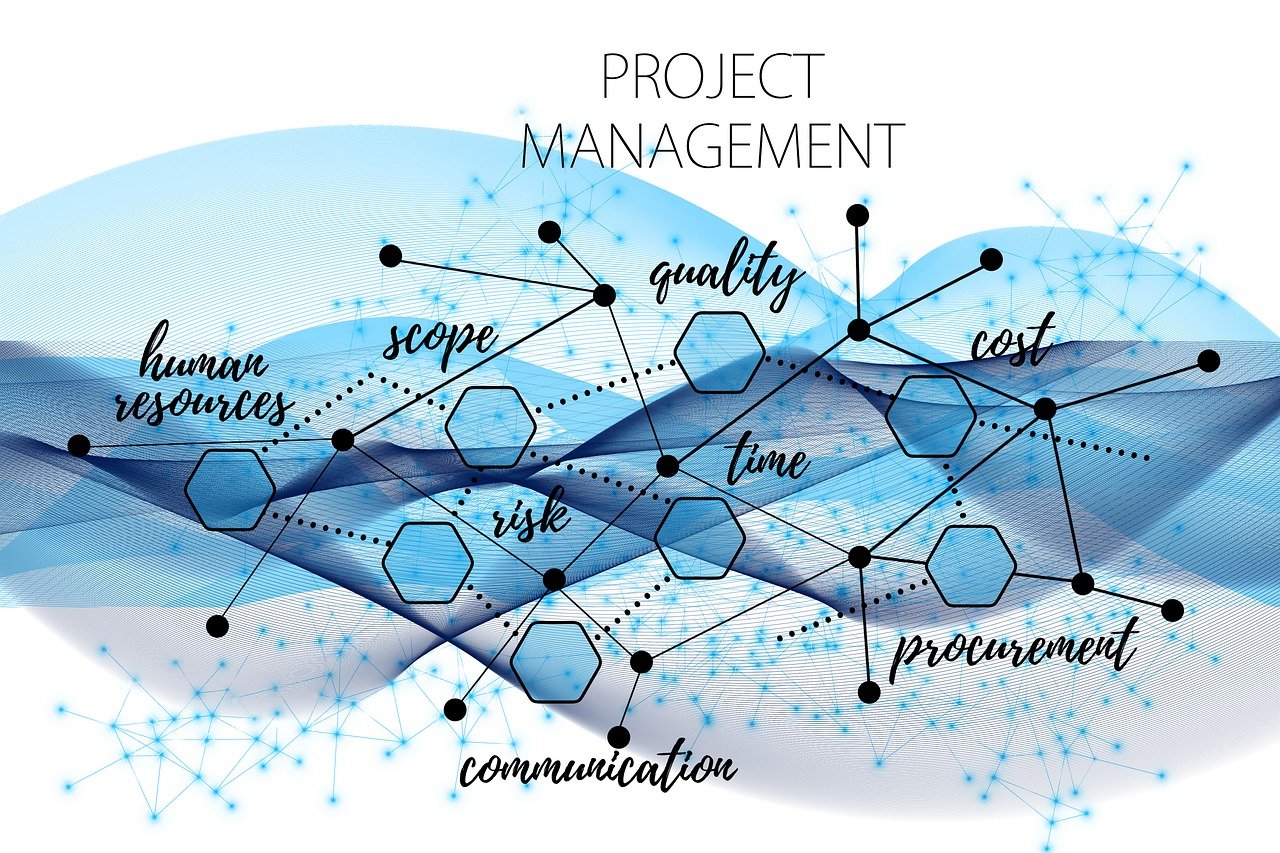Project management and project life cycle
Project management is a structured way of approaching the creation, planning, development, and execution of projects, while the project lifecycle is a framework that guides projects from inception to completion.
Each stage of the lifecycle involves specific activities and deliverables that ensure the projects are managed systematically and effectively.
The application of a lifecycle to networking and cybersecurity projects ensures structured and controlled project management that can be monitored and measured with the availability of resources.
Below is a detailed explanation of each stage in the context of a networking and cybersecurity project, with an example of a project to improve a LAN network for a business operation.
Initiation of the Project

This is the project’s first stage, where the need or problem is identified. It is also a stage to conduct initial feasibility studies, like research on the problem or need that has been identified.
It is also a stage where all objectives and the scope of the project are defined. An example of a Network project proposal Initiating a LAN project that requires the design and implementation of an improved LAN network infrastructure to support business operations.
You must Identify key stakeholders, such as IT staff, department heads, and end-users who will be impacted by the LAN. Also, secure approval from senior management to proceed with the project.
Defining the Project

The main objective and goal are to enhance the internal communication and resource-sharing capabilities within the business by improving a LAN network infrastructure to support business operations.
At this stage, define the network architecture needed with the required hardware and software. Also define storage requirements, data access protocols, and security measures, and define specific security goals, such as protecting against malware and phishing attacks.
Make a feasibility study that includes assessing the current infrastructure and identifying and evaluating potential benefits.
Planning of the Project
In the planning stage, detailed plans are developed to guide the execution of the project plan, including tasks, timelines, and resources. In this planning stage, tasks are assigned roles and responsibilities.
A communication plan is also created to develop, manage, and mitigate risks. A time frame for the completion of the project and budget resources will also be allocated for the project.
For example, planning and developing a comprehensive project plan outlining tasks, timelines, resources, and dependencies to enhance the internal communication and resource-sharing capabilities within the organization by setting up a LAN.
The main objectives of the planning will be to create a detailed network design, specifying the layout and types of network devices (e.g., switches, routers, access points), cabling requirements, and IP addressing scheme.
Identify potential risks, such as hardware failure or installation delays, and develop mitigation strategies. Finalize the budget and allocate resources, ensuring that all necessary hardware, software, and personnel are available.
Plan training sessions for IT staff and end-users to ensure they can effectively use and manage the new LAN.
Launch and Execution
This stage involves the actual implementation of the LAN project according to the recommended design and plan. In this stage, monitoring the project’s progress and performance are essential and crucial to the project’s life cycle.
Execute and manage any changes and updates to the project. Communicate regularly with stakeholders about updates on the project. all the necessary information. Conduct testing and validation of deliverables to ensure the objectives of the project are met.
An example of the improvement of a LAN network infrastructure to support business operations will be to purchase the necessary hardware and software components.
Install network devices and cabling, and configure the network according to the design. This includes setting up switches, routers, and access points, as well as connecting and configuring computers. Conduct thorough testing to ensure that the network operates as intended.
Test connectivity, data transfer speeds, network security, and access to shared resources. Also, migrate data to the cloud, ensure data integrity and access, and conduct user training. Provide training sessions for IT staff on network management and for end-users on accessing and using network resources.
Document the entire setup, including network diagrams, configuration settings, and troubleshooting procedures. Also, share necessary documentation with stakeholders.

Closure
The closure stage involves finalizing the project, ensuring all deliverables are met, and obtaining formal acceptance from stakeholders.
Perform final testing to ensure all aspects of the LAN are functioning correctly and meet the project requirements. Conduct a review meeting with stakeholders to demonstrate the LAN’s functionality and gather feedback.
Obtain formal sign-off from stakeholders indicating their acceptance of the completed project. Compile all project documentation, including design documents, configuration files, training materials, and user guides.
Conduct a lessons-learned session to capture what went well and what could be improved for future projects.
Post-Project Evaluation
Post-project evaluation is crucial to assessing the long-term success and performance of the improvement of a network infrastructure to support business operations with LAN.
There must be Continuous monitoring of the LAN’s performance to ensure it meets the organization’s needs. Use network monitoring tools to track usage, detect issues, and optimize performance. Gather feedback from end-users regularly to identify any issues or areas for improvement.
Plan and perform regular maintenance, including software updates, hardware checks, and security audits. Assess the network’s scalability to ensure it can accommodate future growth, such as adding more devices or expanding to new areas.
Schedule periodic review meetings to evaluate the LAN’s effectiveness and discuss any necessary upgrades or enhancements.
In Summary
Understanding and applying the project lifecycle stages to networking and cybersecurity projects ensures thorough planning, efficient execution, and comprehensive evaluation.
This systematic approach helps in managing complexities by meeting objectives and delivering successful projects.
With the approach of project management as a guide, by also following these stages and including a future review, the business can ensure the successful implementation and ongoing performance of their LAN projects, which will improve their internal communication and resource-sharing capabilities for the business.
Internet Source:
Project Management Timeline: Types, Uses, Examples, Template, and How To Calculate Bakkah
How to build a computer network for your small business, Part 1, The Basics Jones IT (itjones.com)


Leave a Reply